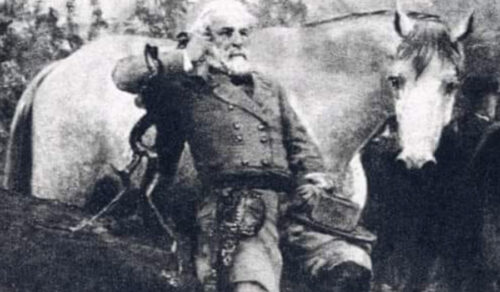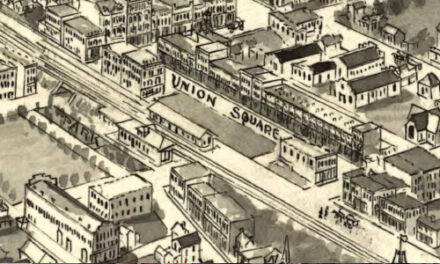
This month marks anniversaries for both the beginning and the end of the American Civil War. Come April 9, 160 years have passed since Robert E. Lee surrendered to Ulysses S. Grant at Appomattox Court House in Virginia, the biggest of the several Confederate armies that spring to lay down their arms and admit defeat. Later in the month, down at Durham Station in North Carolina, Joe Johnston followed Lee’s example and gave up to William T. Sherman.
The Civil War still stands as America’s greatest tragedy. Estimates of around 620,000 make the war the deadliest conflict ever seen on these shores, with casualties equaling all other American wars combined. It’s amazing that the war still has a political edge to it, with folks arguing on why the war was fought, but it shows that in some ways the friction that began this same month of April has yet to be fully resolved.

Photo: Lee, the man in whom the Confederacy placed its hopes.
One hundred sixty-four years ago, southerns believed they had to right to break away from the United States and create their own union, comprised of 11 states, of which NC was one. Thirteen stars on the Confederate battle banner (or cross of St. Andrews if you prefer) held out hope that Kentucky and Missouri might one day also hop over to the other side. In those days, even with the odds against them, Confederate fire-eaters (term for the most vehement separatists) thought that one Southern boy could whip ten “Yankee hirelings,” a slur on Union volunteers.
To go to war, southerners needed to believe such fantasies since the odds were against then. The federals had more of everything, men, factories, arms, railroad trackage, ships, organization, etc. You get the picture.
However, against all odds, Confederate armies posted impressive wins in the first two years of the war. They routed the Union army back toward Washington, DC, at the first major battle in the east, First Manassas (or Bull Run as it was known in the North proving they couldn’t even agree on the name of the battles). The next year, the same outcome at the Second Battle of Manassas, despite the fact that some Confederates were forced to use rocks as a weapon, having run out of ammunition.
By that point, Robert E. Lee was commander of the Army of Northern Virginia. He was not the first choice of Confederate military leaders. Lee’s reputation was substantial going into the war, with the United States government offering him the job of commander of all their forces. It was a dream job for Lee, but he turned it down. Lee spent his life trying to rehabilitate the family name after his father, a lieutenant to George Washington in the American Revolution had run off with a woman, abandoning his wife and family. Lee’s mother told him that in all things, he should consider what his father might do in the same situation, and do the opposite.
Siding with his “country” (Virginia), he gained an early nickname of “Granny Lee.” Confederate leaders thought him too old to be the kind of aggressive commander they needed.
When the Federal army was so close to the Confederate capital in Richmond, they could see the spires of the city’s churches, out of desperation, president Jefferson Davis turned to Lee to drive them back. He launched a series of furious battles known as the Seven Days Campaign with such reckless abandon that Union commander George McClellan thought Lee had an army twice the size of his own. Actually, the number ran in the opposite direction.
Sometimes perception overrules reality.









